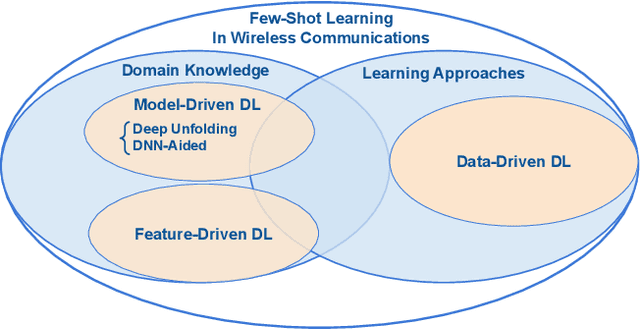Fast Adaptation for Deep Learning-based Wireless Communications
Paper and Code
Sep 06, 2024



The integration with artificial intelligence (AI) is recognized as one of the six usage scenarios in next-generation wireless communications. However, several critical challenges hinder the widespread application of deep learning (DL) techniques in wireless communications. In particular, existing DL-based wireless communications struggle to adapt to the rapidly changing wireless environments. In this paper, we discuss fast adaptation for DL-based wireless communications by using few-shot learning (FSL) techniques. We first identify the differences between fast adaptation in wireless communications and traditional AI tasks by highlighting two distinct FSL design requirements for wireless communications. To establish a wide perspective, we present a comprehensive review of the existing FSL techniques in wireless communications that satisfy these two design requirements. In particular, we emphasize the importance of applying domain knowledge in achieving fast adaptation. We specifically focus on multiuser multiple-input multiple-output (MU-MIMO) precoding as an examples to demonstrate the advantages of the FSL to achieve fast adaptation in wireless communications. Finally, we highlight several open research issues for achieving broadscope future deployment of fast adaptive DL in wireless communication applications.
 Add to Chrome
Add to Chrome Add to Firefox
Add to Firefox Add to Edge
Add to Edge